Elad Hazan
Princeton University and Google Brain
Efficient Spectral Control of Partially Observed Linear Dynamical Systems
May 27, 2025Abstract:We propose a new method for the problem of controlling linear dynamical systems under partial observation and adversarial disturbances. Our new algorithm, Double Spectral Control (DSC), matches the best known regret guarantees while exponentially improving runtime complexity over previous approaches in its dependence on the system's stability margin. Our key innovation is a two-level spectral approximation strategy, leveraging double convolution with a universal basis of spectral filters, enabling efficient and accurate learning of the best linear dynamical controllers.
SpectraLDS: Provable Distillation for Linear Dynamical Systems
May 23, 2025Abstract:We present the first provable method for identifying symmetric linear dynamical systems (LDS) with accuracy guarantees that are independent of the systems' state dimension or effective memory. Our approach builds upon recent work that represents symmetric LDSs as convolutions learnable via fixed spectral transformations. We show how to invert this representation, thereby recovering an LDS model from its spectral transform and yielding an end-to-end convex optimization procedure. This distillation preserves predictive accuracy while enabling constant-time and constant-space inference per token, independent of sequence length. We evaluate our method, SpectraLDS, as a component in sequence prediction architectures and demonstrate that accuracy is preserved while inference efficiency is improved on tasks such as language modeling.
A New Approach to Controlling Linear Dynamical Systems
Apr 04, 2025Abstract:We propose a new method for controlling linear dynamical systems under adversarial disturbances and cost functions. Our algorithm achieves a running time that scales polylogarithmically with the inverse of the stability margin, improving upon prior methods with polynomial dependence maintaining the same regret guarantees. The technique, which may be of independent interest, is based on a novel convex relaxation that approximates linear control policies using spectral filters constructed from the eigenvectors of a specific Hankel matrix.
Dimension-free Regret for Learning Asymmetric Linear Dynamical Systems
Feb 10, 2025Abstract:Previously, methods for learning marginally stable linear dynamical systems either required the transition matrix to be symmetric or incurred regret bounds that scale polynomially with the system's hidden dimension. In this work, we introduce a novel method that overcomes this trade-off, achieving dimension-free regret despite the presence of asymmetric matrices and marginal stability. Our method combines spectral filtering with linear predictors and employs Chebyshev polynomials in the complex plane to construct a novel spectral filtering basis. This construction guarantees sublinear regret in an online learning framework, without relying on any statistical or generative assumptions. Specifically, we prove that as long as the transition matrix has eigenvalues with complex component bounded by $1/\mathrm{poly} \log T$, then our method achieves regret $\tilde{O}(T^{9/10})$ when compared to the best linear dynamical predictor in hindsight.
Provable Length Generalization in Sequence Prediction via Spectral Filtering
Nov 01, 2024



Abstract:We consider the problem of length generalization in sequence prediction. We define a new metric of performance in this setting -- the Asymmetric-Regret -- which measures regret against a benchmark predictor with longer context length than available to the learner. We continue by studying this concept through the lens of the spectral filtering algorithm. We present a gradient-based learning algorithm that provably achieves length generalization for linear dynamical systems. We conclude with proof-of-concept experiments which are consistent with our theory.
FutureFill: Fast Generation from Convolutional Sequence Models
Oct 02, 2024



Abstract:We address the challenge of efficient auto-regressive generation in sequence prediction models by introducing FutureFill: a method for fast generation that applies to any sequence prediction algorithm based on convolutional operators. Our approach reduces the generation time requirement from linear to square root relative to the context length. Additionally, FutureFill requires a prefill cache sized only by the number of tokens generated, which is smaller than the cache requirements for standard convolutional and attention-based models. We validate our theoretical findings with experimental evidence demonstrating correctness and efficiency gains in a synthetic generation task.
Flash STU: Fast Spectral Transform Units
Sep 17, 2024Abstract:This paper describes an efficient, open source PyTorch implementation of the Spectral Transform Unit. We investigate sequence prediction tasks over several modalities including language, robotics, and simulated dynamical systems. We find that for the same parameter count, the STU and its variants outperform the Transformer as well as other leading state space models across various modalities.
Online Control in Population Dynamics
Jun 03, 2024
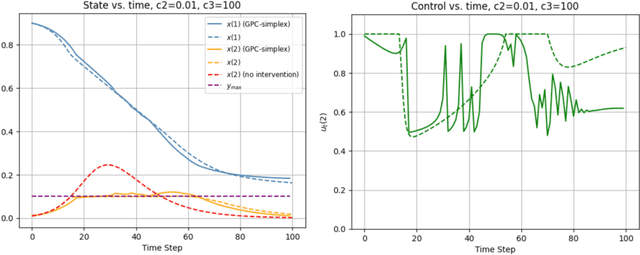
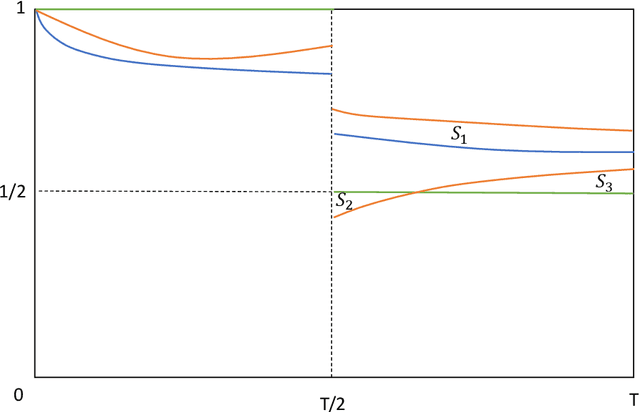
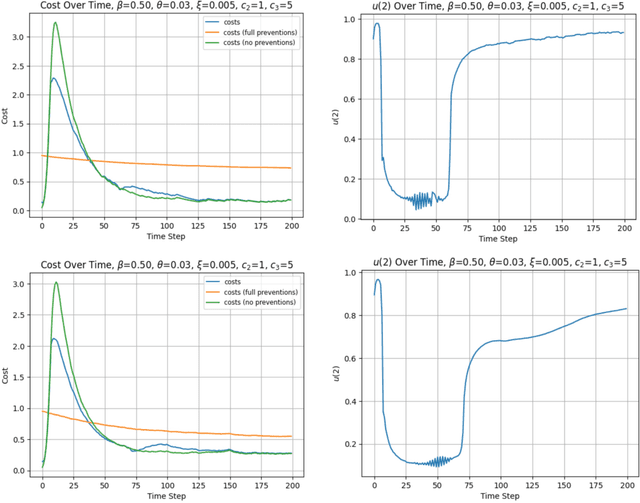
Abstract:The study of population dynamics originated with early sociological works (Malthus, 1872) but has since extended into many fields, including biology, epidemiology, evolutionary game theory, and economics. Most studies on population dynamics focus on the problem of prediction rather than control. Existing mathematical models for population control are often restricted to specific, noise-free dynamics, while real-world population changes can be complex and adversarial. To address this gap, we propose a new framework based on the paradigm of online control. We first characterize a set of linear dynamical systems that can naturally model evolving populations. We then give an efficient gradient-based controller for these systems, with near-optimal regret bounds with respect to a broad class of linear policies. Our empirical evaluations demonstrate the effectiveness of the proposed algorithm for population control even in non-linear models such as SIR and replicator dynamics.
Second Order Methods for Bandit Optimization and Control
Feb 14, 2024



Abstract:Bandit convex optimization (BCO) is a general framework for online decision making under uncertainty. While tight regret bounds for general convex losses have been established, existing algorithms achieving these bounds have prohibitive computational costs for high dimensional data. In this paper, we propose a simple and practical BCO algorithm inspired by the online Newton step algorithm. We show that our algorithm achieves optimal (in terms of horizon) regret bounds for a large class of convex functions that we call $\kappa$-convex. This class contains a wide range of practically relevant loss functions including linear, quadratic, and generalized linear models. In addition to optimal regret, this method is the most efficient known algorithm for several well-studied applications including bandit logistic regression. Furthermore, we investigate the adaptation of our second-order bandit algorithm to online convex optimization with memory. We show that for loss functions with a certain affine structure, the extended algorithm attains optimal regret. This leads to an algorithm with optimal regret for bandit LQR/LQG problems under a fully adversarial noise model, thereby resolving an open question posed in \citep{gradu2020non} and \citep{sun2023optimal}. Finally, we show that the more general problem of BCO with (non-affine) memory is harder. We derive a $\tilde{\Omega}(T^{2/3})$ regret lower bound, even under the assumption of smooth and quadratic losses.
Adaptive Regret for Bandits Made Possible: Two Queries Suffice
Jan 17, 2024
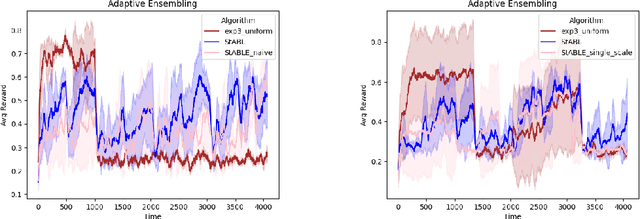
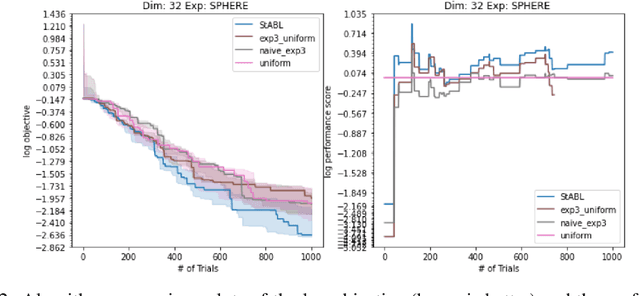

Abstract:Fast changing states or volatile environments pose a significant challenge to online optimization, which needs to perform rapid adaptation under limited observation. In this paper, we give query and regret optimal bandit algorithms under the strict notion of strongly adaptive regret, which measures the maximum regret over any contiguous interval $I$. Due to its worst-case nature, there is an almost-linear $\Omega(|I|^{1-\epsilon})$ regret lower bound, when only one query per round is allowed [Daniely el al, ICML 2015]. Surprisingly, with just two queries per round, we give Strongly Adaptive Bandit Learner (StABL) that achieves $\tilde{O}(\sqrt{n|I|})$ adaptive regret for multi-armed bandits with $n$ arms. The bound is tight and cannot be improved in general. Our algorithm leverages a multiplicative update scheme of varying stepsizes and a carefully chosen observation distribution to control the variance. Furthermore, we extend our results and provide optimal algorithms in the bandit convex optimization setting. Finally, we empirically demonstrate the superior performance of our algorithms under volatile environments and for downstream tasks, such as algorithm selection for hyperparameter optimization.
 Add to Chrome
Add to Chrome Add to Firefox
Add to Firefox Add to Edge
Add to Edge